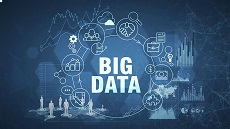
Big data was born in the clasps of a big corporation, and for a long time, resided solely in the hands of similarly large companies. Before the advent of cloud computing, virtually every business that needed to process data had to own a server.
The problem that arose whenever a small business attempted the same was the expensive servers – both in terms of the initial cost and the cost of maintenance.
Things have changed quite considerably since 2004 when Hadoop was first launched. Processing and computing power have become cheap enough that any business that needs to can access big data analytics whenever they want.
So, what does the sudden availability of big data to SMBs mean?
Better marketing campaigns
Big data has the potential to take a central role in making important marketing decisions for small businesses. It helps to take the guesswork out of decision-making by building accurate buyer personas, providing information such as purchasing tendencies, customer behavior, and general preferences. In turn, identifying what works for specific demographics and consumer segments that much easier.
Before big data was widely available, marketers often flocked to social media platforms because they had a ‘feeling’ that it was great for finding new customers. Now, it’s possible to trace every visitor and conversion back to the source. This then allows marketers to effectively use the data and place their efforts on channels that work.
The biggest advantage of using big data, however, lies in the ability to provide information that’s not immediately obvious. For instance, you might find that the biggest portion of your consumer base consists of women and they are more likely to convert if sent an email in the morning. Pieces of data such as this can be used to forge a well-thought-out and efficient marketing campaign.
Customer-tailored content
Gaining a comprehensive understanding of your current consumer base and target audience is one of the most crucial things a marketer can spend their time on. It’s easy to get absorbed in thinking of your customers as a single entity. But at the end of the day, each of them is an individual with their personal preferences. Big data analytics allows businesses to serve up content that’s tailored for specific customers and their preferences.
Personalization is the perfect example of how big data analytics aims to change the future of how businesses relate to their customers. Traditionally, a newsletter would contain the same content to every person on their list, for example. Picking different messages, images and even colors for specific customers just wasn’t possible with the limited computing power available at the time.
Now, data is available in giant data silos that are not only processed on advanced hardware, but the software has also gotten considerably better. The Hadoop Spark debate still rages on today, with Spark’s in-memory computing taking a great chunk of Hadoop’s market share with it.
These advancements in both hardware and software encourage businesses to rely on delivering more personal content. In turn, businesses can create a more consistent experience for customers across different channels, improve a customer’s experience with your brand, improve brand loyalty and drive more revenue.
Understanding the competition
For a company to be successful over its competitors, it needs to be able to gain an advantage over them. What are they doing that you’re missing out on? Before big data analytics, studying the competition simply involved visiting their websites and hoping to find some useful information.
This method might provide information such as what products they sell, how they price their products, and how successful they are. It leaves out more important information such as how they market their business, how successful those campaigns have been, the nature of their delivery system, what technology they rely on, their social media presence, and the general sentiment around their brand by consumers. This is where big data analytics steps in to fill the void.
Big data analytics helps businesses understand what kind of approaches work for their market segment and hopefully get new ideas on new marketing strategies that work. For instance, tools like Airtable can be used to monitor how well your competitors’ Facebook ad campaigns are doing, or even from Facebook itself via their ‘Page Transparency’ feature.
If you need to study where their customers come from, tools such as Alexa and SimilarWeb can help narrow it down for you. Once you’ve understood your competitors, it’s much easier to find ways to gain an advantage over them.
Dynamic business models
Adopting big data analytics enables businesses to explore new ways to make money. It’s not always obvious who your potential customers might be or what will resonate with the market, but relying on data allows you to test an idea before launch and even predict how well a product will do.
Big data analytics allows for more conclusive testing since modern machines can process millions of variables at a time, rather than depend on a single metric throughout. It can take into account a visitor’s past purchasing history, browsing tendencies, and location.
Before launching a new product or feature, it’s routine to have them tested in different segments of the market. All major businesses do it – Facebook tested IGTV in countries like Malaysia and Google slowly measured how consumers reacted to their redesign of the platform before rolling it out. This allows brands to test out new products, features and scrap old ones with as little friction as possible.
Conclusion
Big data may seem intimidating at first, but it’s not something that only big businesses can take advantage of. Cloud-based analytics tools are so widespread and cheap that any organization can take advantage of them today, regardless of their size.
As more information becomes available, SMBs will be able to make more informed business decisions, take advantage of efficient data-driven marketing, tailor their content for specific customers and create new opportunities for generating income. All thanks to the power of big data analytics.






